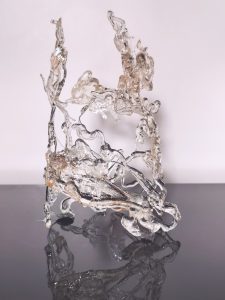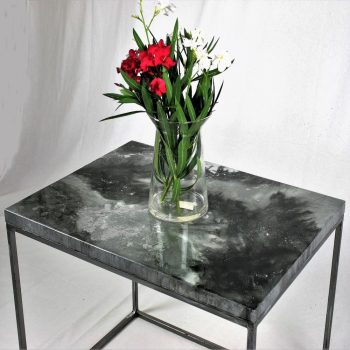1. What is epoxy resin?
It’s a polymer consisting of two components, a base and a catalyst, which solidify with air when they are mixed together.
To obtain the solid effect it is important to consider the right proportions; the instructions are usually on the box.
2. Why use resin floors?
The resin floors are suitable for every kind of environment. It can be used also for outdoor spaces such as gardens, terraces, and sports fields. This kind of coating is weather and wear-resistant and for this reason, is chosen for the environment with frequent passage.
3. In how much time does the resin solidify?
From 24 hours up to 7 days after the application.
4. Can we cut or drill holes in the solid resin?
The solid resin can be processed with cutting tools as if it were hard plastic.
5. Can the resin be coloured?
The transparent resin can be coloured with pigments, natural or artificial dust, with semi-liquid or liquid substances that create the desired tonality.
Liquid substances are inks and colors, semi-liquid substances are concentrated paste dyes, while powders are those that interfere less with the catalysis process.
6. How do I clean a resin floor?
Resin is easy to clean because it isn’t an absorbent material without joints. Warm water and cloth are sufficient. In case of stubborn dirt, you can add mild soap. We advise against ammonia that can ruin the surface if left to act. In case of stubborn dirt, you can add mild soap. We advise against ammonia that can ruin the surface if left to act.
7. Is the resin waterproof?
The resin is water-resistant.
For this reason, it is used by sport or public facilities, in particular those used by the elderly.
8. Can the resin floor be adorned with objects?
The resin floor can be adorned with the introduction of objects as long as they are not too thick. It’s a good idea to accurately clean the objects before introducing them.
9. Can we restructure a broken resin floor?
A resin floor can be repaired in two ways: restructuring the resin layer or treating the surface; thanks to specific machinery it is possible to remove the damaged layer and reapply the resin giving new life to the floor.
10. Can we put the underfloor heating with a resin floor?
Because the layer of resin is thin, this material is suitable for heat transfer without suffering damage.
For this need, in particular, Gobbetto suggests Dega Energy, an innovative, non-toxic resin, with strong conductive properties.
Applied to a heating system with radiant panels, an energy saving of approximately 20% is achieved.
The metallic properties of this material retain the heat because of the conductive floor. It releases the heat more slowly and efficiently.



